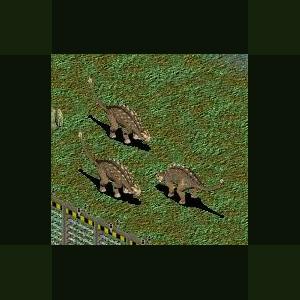About This File
Polacanthus
Polacanthus, deriving its name from the Ancient Greek poly "many" and acantha "thorn" or "prickle", was an early armored, spiked, plant-eating ankylosaur from the early Cretaceous period. It lived 132 to 112 million years ago in what is now western Europe.
Polacanthus grew to between 4 to 5 metres (13 to 16 ft) long. It was a quadrupedal ornithischian or "bird-hipped" dinosaur. There are not many fossil remains of this creature, and some important anatomical features, such as its skull, are poorly known.
Polacanthus had a large sacral shield, a single fused sheet of dermal bone over its hips (sacral area) which was not attached to the underlying bone and decorated with tubercles. This feature is shared with other Polacanthine dinosaurs such as Gastonia and Mymoorapelta.
Polacanthus foxii was discovered by the Reverend William Fox on the Isle of Wight in 1865. It was an incomplete skeleton with the head, neck, anterior armour and forelimbs missing. Two other partial skeletons have since been found. The second known specimen was found and excavated by Dr William T. Blows in 1979, and is also in the London Natural History Museum. It is the first specimen to show neck vertebrae and anterior armour.
P. rudgwickensis was named in 1996 by Dr. William T. Blows, after review of some fossil material found in 1985 and thought to have been Iguanodon, which was on display at the Horsham Museum in Sussex. The material is fragmentary and includes several incomplete vertebrae, partial scapulocoracoid, the distal end of humerus, a nearly complete right tibia, rib fragments, and two osteoderms. P. rudgwickensis seems to have been about 30% larger than type species P. foxii and differs from it in numerous characters of the vertebrae and dermal armor. It is named after the village of Rudgwick in West Sussex and was discovered at a Rudgwick Brickworks Company quarry, at the quarry floor in gray-green marl beds of the Wessex Formation. Barremian age, approximately 124-132 million years ago.



Recommended Comments
There are no comments to display.
Create an account or sign in to comment
You need to be a member in order to leave a comment
Create an account
Sign up for a new account in our community. It's easy!
Register a new accountSign in
Already have an account? Sign in here.
Sign In Now